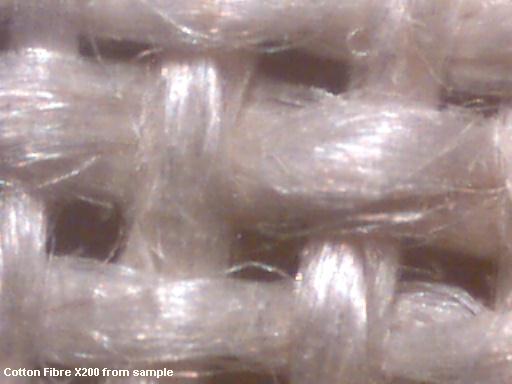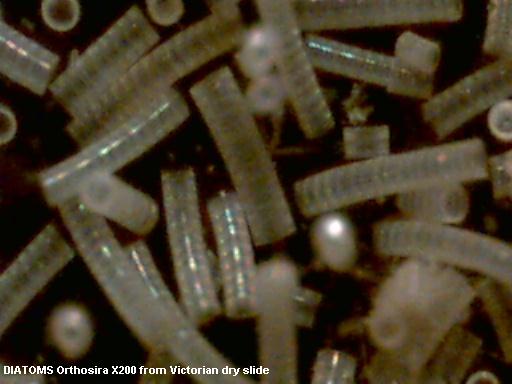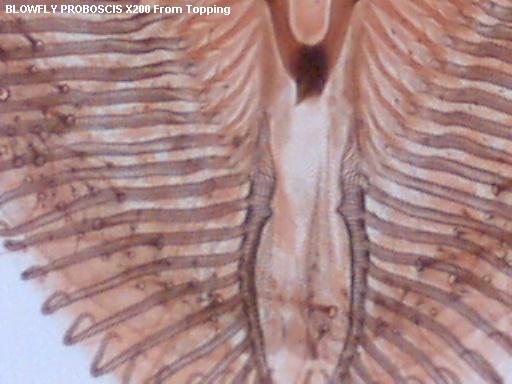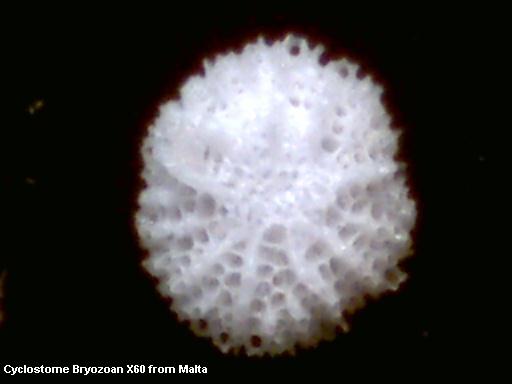The QX3 Computer Microscope in Europe by Brian Darnton, UK
Introduction
This instrument has been on the US market for some time as a toy that may be used by children from the age of 6 plus. One or two excellent articles have already been submitted by American readers of Micscape. During the past year the product has appeared on the European market. Reading between the lines there seems to be a move towards a need for supplementary home education as state schools exhibit difficulties and private schooling becomes proportionally more expensive.
Minimum requirements.
One of the first hurdles is a set of requirements that may not be met by the owners of old computers and it is probably worthwhile including them here. The CD supplied actually runs a check before installation and it will not function unless these criteria are met. I suspect that the secondhand sales of this model advertised on the auction sites are probably more due to unachieved computer requirements than being down to dissatisfaction with the product.
The ListAll aspects have to met before installation, but management of the software is very straightforward.
- USB enabled
- Windows 98 or better
- Intel Pentium or Celeron processor 200MHz or better
- 32MB of RAM
- 75MB hard drive spare minimum
- Quad speed CD ROM drive
- 800X600 display 16bit colour. Minimum
- Windows compatible sound device
- Video and sound compatible with DirectX.
Functions.
The instrument has built in transmitted and reflected lights that are controlled manually by the computer mouse as well as a comprehensive automatic brightness system. The reflected light can be replaced by an external light but high levels must be avoided in order to avoid damage to the very sensitive photo device. The main optical system consists of 3 parallel vertical systems that can be rotated into place manually of X10, X60 and X200. Focus is achieved by a traditional rack and pinion but there is no fine focus. The body of the `scope can be removed from the stand and held manually in order to track mobile objects at low power.
As well as the still picture facility, there is the possibility of a short movie track and a time-lapse facility which is great fun.
The software allows for considerable image manipulation by the application of art routines including the use of a kaleidoscope like mixer, as well as various sound tracks of various moods of music.
Test drives.
As a test object, I thought that fabrics like woven silk, cotton, and coarse jute might test the reflected light possibilities. The built in light tends to glare a little at low magnification and I was unable to achieve a perfectly evenly illuminated field, but the images are most satisfactory. An external microscope light removes this problem of course. The colour interpretation seems to be good. In transmitted light I used a grand old slide of Mr.Topping of the proboscis of the blow-fly. I could certainly record the false tracheal rings. Insect mounts and mounts of substance were generally excellent but more transparent objects in water were more difficult to achieve. The need for a traditional substage condenser was obvious but I suppose that would not only increase the price but also make demands on more skills by the operator.
Polarised light was one of my first efforts using the time-lapse facility, with the clock set at one frame per second. (See page 3). I melted a minute amount of menthol under a large slip and let it cool between two polar filters at optical right angles to one another on the stage, held together and spaced with Blu-tak. This is really only the tip of the iceberg as far as the QX3 is concerned. A whole archive of shots comes with the software.
In an underwater shot which contains large numbers of motile micro-organisms the background looks fuzzy because of the speed of image refreshment but in the actual shots taken, all that is in focus is as sharp as possible.
All the images in this article are made with the built in illumination of the QX3 without ancillary light sources. Although it has been built for children I was not disappointed with the microscope. The time-lapse facility alone opens up a whole new dimension to home microscopy.
The 512 x 284 pixels of the image are quite satisfactory for routine illustration and with practice one can actually assemble a larger image from several smaller ones thereby gaining more detail. The images are also very useful for PMS (Postal Microscopical Society) notebooks when the picture size can be reduced and labelled in detail of course. The QX3 is in fact a splendid toy for all ages, and I have already had great pleasure from mine.
Comments to the author Brian Darnton are welcomed.
Visit Brian's home pages at http//www.darnton.freeserve.co.uk where a variety of information and images, including marine life like foraminifera, are presented.
Images





